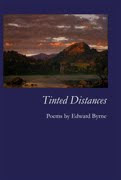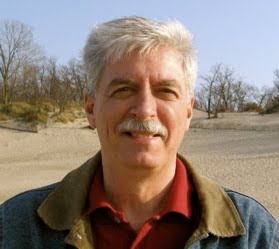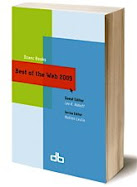
On this Fat Tuesday, the following poem by Elizabeth Bishop, the last she completed before her death in 1979, seems most appropriate. “Pink Dog” is a marvelously satirical piece that camouflages its social criticism with witty and playful language, even in its heavy use of rhyme and the appearance of a couple innovatively teasing line breaks. Bishop contrasts the superficiality and excess of Rio’s Carnival atmosphere with the disturbing treatment of the growing numbers of poor or other people throughout the city who exist at society’s margins.
As Brett C. Millier reports in her biography of Bishop, Elizabeth Bishop: Life and the Memory of It (University of California Press, 1993), “Pink Dog” was begun by Bishop in 1963; however, due to her well-known care and caution when writing poetry, the work was not ready for publication until 1979. Indeed, Millier writes: “Although it was not finished until 1979—it was the last poem Elizabeth finished—‘Pink Dog’ dates from the Carnival season of 1963 and expresses her growing disaffection with Brazil’s poverty, finding irony even in the people’s good spirits.” Millier continues to suggest that another theme readers should take away from the poem concerns “a good deal of ambivalence about femaleness as well.”
In fact, a number of critics have commented upon the metaphorical implications offered by Bishop’s presentation of the naked body of the dog in the poem. As Bonnie Costello observed in Elizabeth Bishop: Questions of Mastery (Harvard University Press, 1991): “In ‘Pink Dog’ she urges a costume on a naked dog (a dehumanized image of the body) for the sake of its survival in a culture that wishes to deny the mortal body. The poet writes from the margin, on the divide between culture and nature, a creature of both. It is her empathy for the pink dog, her own sense of marginality, that provokes her terrible advice. In a culture which abhors the body’s mutability, disguise is the only alternative to expulsion of annihilation. The dog in us must be dressed up and taught to dance if it is to be tolerated at all. Carnival is now the expression not of freedom but of repression.”
Readers also are invited to examine previous posts in “One Poet’s Notes” concerning Elizabeth Bishop: “‘Elizabeth Bishop’s Poetic Voice: Reconciling Influences’ by Laura Ebberson,” “Jennifer Yaros: ‘Nature and the Self: Dickinson, Bishop, Plath, and Oliver,’” and “Elizabeth Bishop: The Poet’s Voice.”
As Brett C. Millier reports in her biography of Bishop, Elizabeth Bishop: Life and the Memory of It (University of California Press, 1993), “Pink Dog” was begun by Bishop in 1963; however, due to her well-known care and caution when writing poetry, the work was not ready for publication until 1979. Indeed, Millier writes: “Although it was not finished until 1979—it was the last poem Elizabeth finished—‘Pink Dog’ dates from the Carnival season of 1963 and expresses her growing disaffection with Brazil’s poverty, finding irony even in the people’s good spirits.” Millier continues to suggest that another theme readers should take away from the poem concerns “a good deal of ambivalence about femaleness as well.”
In fact, a number of critics have commented upon the metaphorical implications offered by Bishop’s presentation of the naked body of the dog in the poem. As Bonnie Costello observed in Elizabeth Bishop: Questions of Mastery (Harvard University Press, 1991): “In ‘Pink Dog’ she urges a costume on a naked dog (a dehumanized image of the body) for the sake of its survival in a culture that wishes to deny the mortal body. The poet writes from the margin, on the divide between culture and nature, a creature of both. It is her empathy for the pink dog, her own sense of marginality, that provokes her terrible advice. In a culture which abhors the body’s mutability, disguise is the only alternative to expulsion of annihilation. The dog in us must be dressed up and taught to dance if it is to be tolerated at all. Carnival is now the expression not of freedom but of repression.”
PINK DOG
Rio de Janeiro
The sun is blazing and the sky is blue.
Umbrellas clothe the beach in every hue.
Naked, you trot across the avenue.
Oh, never have I seen a dog so bare!
Naked and pink, without a single hair . . .
Startled, the passersby draw back and stare.
Of course they’re mortally afraid of rabies.
You are not mad; you have a case of scabies
but look intelligent. Where are your babies?
(A nursing mother, by those hanging teats.)
In what slum have you hidden them, poor bitch,
while you go begging, living by your wits?
Didn’t you know? It’s been on all the papers,
to solve the problem, how they deal with beggars?
They take and throw them in the tidal rivers.
Yes, idiots, paralytics, parasites
go bobbing in the ebbing sewage, nights
out in the suburbs, where there are no lights.
If they do this to anyone who begs,
drugged, drunk, or sober, with or without legs,
what would they do to sick, four-leggéd dogs?
In the cafés and on the sidewalk corners
the joke is going round that all the beggars
who can afford them now wear life preservers.
In your condition you would not be able
even to float, much less to dog-paddle.
Now look, the practical, the sensible
solution is to wear a fantasia.
Tonight you simply can’t afford to be a-
n eyesore. But no one will ever see a
dog in mascara this time of year.
Ash Wednesday’ll come but Carnival is here.
What sambas can you dance? What will you wear?
They say that Carnival’s degenerating
—radios, Americans, or something,
have ruined it completely. They’re just talking.
Carnival is always wonderful!
A depilated dog would not look well.
Dress up! Dress up and dance at Carnival!
—Elizabeth Bishop
Readers also are invited to examine previous posts in “One Poet’s Notes” concerning Elizabeth Bishop: “‘Elizabeth Bishop’s Poetic Voice: Reconciling Influences’ by Laura Ebberson,” “Jennifer Yaros: ‘Nature and the Self: Dickinson, Bishop, Plath, and Oliver,’” and “Elizabeth Bishop: The Poet’s Voice.”

































